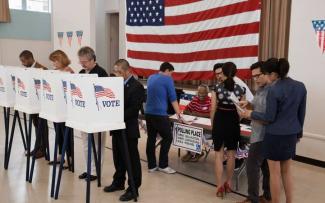
Elections and the Market
Is either party better for the stock market? Suggestions that a win by a Republican candidate (often considered more business-friendly) over a Democratic candidate would be better for the stock market are not supported by history. Since the Reagan years we see the following average annual market returns: under Democratic President (+9.7%) and under Republican President (+6.7%). The prevailing wisdom is that presidential elections add political instability and uncertainty to the mix of other factors (like GDP growth, interest rates and unemployment) that may already be impacting the broader market. In the weeks leading up to an election, we are bombarded with anecdotal evidence that if considered in isolation can be misleading. Another common premise suggests that a divided congress will accomplish little legislatively and that the resulting lack of progress is supportive of stock price growth. Though it is hard to envision in 2020, a divided government often results in broader compromise on important issues like taxation, federal spending and infrastructure. There is, however, more to this story. In fact, during election years in which Republicans control Congress, the market returns a solid +19.7%, versus an average gain of +7.6% with a divided Congress and just 3.2% when Democrats are in control. Elections that resulted in a change in composition by party tended to be preceded by periods of market underperformance.
It is interesting to note that the market fares better in an election with an incumbent versus an open election. This pattern makes sense as incumbents are more inclined to stimulate the economy in market-friendly ways in the hopes of increasing their odds of reelection. Analysis by sector shows that while most sectors advance during an election year, there are three (Technology, Materials and Communication Services) which show, on average, small declines. Stock price performance in the summer leading up to a presidential election can offer some insight into which candidate will be successful in November. When the market climbs from August through October the incumbent party has a great track record winning 82% of the time. In contrast, a falling market during the same time period is predictive (over 86%) of a win by the replacement party.

